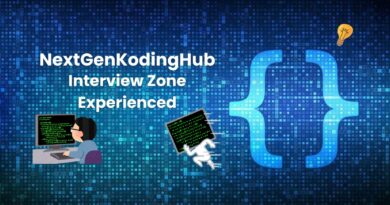SQL and Database Experienced Questions
Interview Zone: SQL & Database Experienced
SQL and Database Experienced Interview Questions – 30+ Expert Topics
To excel in senior data roles, mastering SQL and Database Experienced topics is essential. From performance tuning and indexing strategies to ACID compliance, NoSQL designs, scaling, and security, this guide delivers 30+ Experienced questions that assess both theory and hands-on expertise.
Moreover, answering SQL and Database Experienced questions clearly demonstrates your ability to design robust schemas, write efficient queries, manage transactions, and scale systems. Let’s dive into the questions with explanations, examples, and real-world tips.
1. What are clustered vs non-clustered indexes?
A clustered index sorts the table itself, affecting physical row order. In contrast, a non-clustered index is a separate structure that points to rows. Clustered indexes speed range queries; non-clustered handle specific column lookups. Use both strategically.
2. Explain B-tree vs hash indexes.
B-tree indexes are ordered and support range scans, using log(N) search complexity. Hash indexes use hashed keys for equality lookups but don’t support ordering. Choose B-tree for general use, hash for exact-match workloads.
3. How do you optimize a slow query?
Start by checking the execution plan. Then, optimize with proper indexing, rewrite subqueries as joins, avoid SELECT *, and limit data volume using pagination. Use caching and read replicas to reduce load.
4. Describe ACID properties and isolation levels.
ACID stands for Atomicity, Consistency, Isolation, Durability. Isolation levels—Read Uncommitted, Read Committed, Repeatable Read, Serializable—balance concurrency and accuracy. Prevent anomalies like dirty reads or phantom reads by choosing the right level.
5. What is a deadlock and how do you resolve it?
A deadlock occurs when two transactions wait on each other’s locks. You can prevent it by acquiring locks in a consistent order, using timeouts, or applying optimistic concurrency with row versions.
6. Explain query normalization and its types.
Normalization reduces redundancy and dependency through normal forms (1NF–5NF). De-normalize when reads dominate over writes. Schema design balances normalization, performance, and maintainability.
7. What are window functions and when do you use them?
Window functions (e.g. ROW_NUMBER, RANK) operate over partitions of result sets without collapsing rows. Use them to rank, compute moving averages, or lag/lead values without complex self-joins.
8. Explain partitioning strategies.
Partition tables by range, list, or hash for better manageability and performance. Use range partitioning for dates, hash for balanced distribution. Be aware of partition pruning in queries to maximize benefit.
9. How do you implement full-text search?
Use built-in engines like PostgreSQL’s tsvector or MySQL’s FULLTEXT indexes. Balance stop-word removal, stemming, ranking, and boolean configurations for performance and relevance tuning.
10. Compare relational vs NoSQL databases.
Relational systems support strict schemas and ACID transactions. NoSQL (document, key-value, wide-column, graph) offers flexibility, scalability, and relaxed consistency. Pick based on access patterns, data structure, and operational needs.
11. What are materialized views?
Materialized views are precomputed query results stored on disk. Use them to speed up complex aggregations but they must be refreshed when underlying data changes, either incrementally or manually.
12. How do you monitor database performance?
Monitor slow query logs, index usage, locks, buffer pool, and replication lag. Use tools like pg_stat_statements, MySQL performance_schema, Prometheus, or proprietary monitoring platforms.
13. Explain sharding vs replication.
Replication copies data across nodes for redundancy and read scalability. Sharding splits data horizontally across partitions for write scale. Both require consistent key choices and failover strategies.
14. What is the CAP theorem?
CAP states that in distributed systems, you can choose at most two: Consistency, Availability, or Partition Tolerance. In practice, choose based on use-case: CP for banking, AP for social feeds.
15. Describe how transactions work in distributed systems.
Implement two-phase commit for global consistency or use eventual consistent patterns with sagas. Be cautious of long-running locks and failure recovery strategies.
16. How do you handle soft deletes and audit trails?
Soft deletes use a boolean or timestamp flag to mark removal. For audit trails, use triggers or history tables to log modifications and changes over time.
17. Explain connection pooling.
Connection pooling reuses open sockets to avoid setup costs. Tune pool size based on load, use idle timeouts, and manage leak detection to avoid resource starvation.
18. What are stored procedures vs prepared statements?
Stored procedures run on the server and reduce network trips, while prepared statements improve performance and guard against SQL injection. Use both safely for modular logic and optimization.
19. How do you enforce data integrity?
Use primary/foreign keys, unique constraints, CHECKs, and triggers. Apply business logic in the application layer or stored procedures, ensuring database-level enforcement.
20. Explain schema migrations in production.
Use tools like Flyway or Liquibase to version migrations. Apply forward and roll-back scripts, and run migrations during maintenance windows with proper monitoring and backups.
21. How do you optimize bulk imports?
Use bulk insert mechanisms (COPY in Postgres, LOAD DATA in MySQL). Disable indexes and constraints temporarily, batch commits, and use staging tables for pre-processing.
22. Explain JSON and XML data types in SQL.
Supports semi-structured data inside relational databases. Use functions for querying (->, .json_extract), indexing JSON fields, and validate schemas.
23. What is multi-version concurrency control (MVCC)?
MVCC allows readers and writers to work concurrently using snapshots. It avoids locks by maintaining multiple versions. Understand how vacuuming or compaction works in your database engine.
24. How do you secure database systems?
Apply least privilege, use SSL/TLS encryption, enable auditing, and validate inputs. Rotate credentials securely and isolate databases from public access behind firewalls or VPCs.
25. What strategies do you use for data archiving?
Partition old data, archive to cheaper storage (e.g. S3), and maintain indexes or materialized views for historical queries. Use ETL pipelines and maintain data access layers.
26. Describe how to use foreign key constraints with cascade rules.
Use ON DELETE CASCADE, ON UPDATE SET NULL, or RESTRICT to maintain referential integrity. Understand implications and monitor performance.
27. What are database design anti-patterns?
Anti-patterns include using varchar for dates, EAV schemas, excessive normalization, or cross-object references. Refactor them using proper data modeling and domain-driven design.
28. How do you implement pagination for large tables?
Use keyset/cursor pagination instead of OFFSET/LIMIT for performance. For example, use WHERE id > last_id ORDER BY id LIMIT N to avoid scanning all rows.
29. Explain database version control and CI/CD integration.
Integrate migration tools with CI/CD pipelines. Run tests, lint futures, apply migrations in staging, and deploy automatically when builds pass.
30. Bonus: What are columnar and row-oriented storage trade-offs?
Row-based storage works well for OLTP, while columnar storage (e.g. in analytics DBs) speeds up aggregations on specific fields. Choose based on workload.
Conclusion
These SQL and Database Experienced interview questions will test your command over schema design, query optimization, transaction management, scaling, and security. To reinforce your learning, practice by writing queries, designing schemas, and analyzing execution plans. Then, supplement your knowledge with real-life case studies and performance tuning exercises. With this preparation, you’ll stand out as a database expert in any technical interview.



